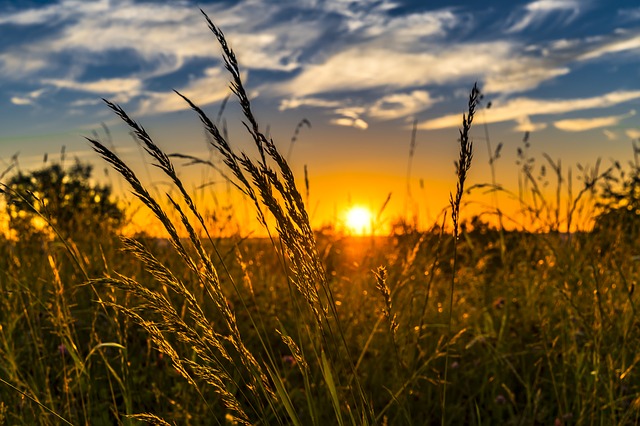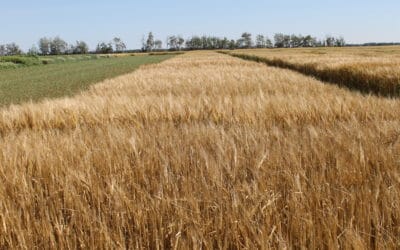Yellowfeed could be a solution when producers are concerned with weathering losses of the annual forage cut and drying in the swath.
“Yellowfeed is a version of greenfeed where the crop is sprayed with glyphosate at the milk-soft dough stage and left to dry, standing in the field,” explains Andrea Hanson, livestock extension specialist with Alberta Agriculture and Forestry. “Once the crop is dry and the weather cooperates, it can be swathed and baled or may be left in the swath for grazing during the fall and winter months.”
Once sprayed and dry, she says that the stand can be swathed and baled on the same day or a few days apart, so the producer can schedule the harvest based on the weather forecast.
“The stand can be cut with a swather rather than a haybine which reduces the kernel and leaf shatter, and there is no need for a rake which would also cause losses. A final advantage is the opportunity for perennial weeds to be controlled because the crop is sprayed with glyphosate. A disadvantage to this system is the elimination of any potential regrowth for late season or dormant grazing.”
Glyphosate is allowed under pre-harvest use in many crops including wheat, oats and barley. It may only be used when the moisture content of the grain is below 30%.
Hanson uses the study Yellowfeed Production in Saskatchewan for rates and recommendations.
“In the study, barley and oat crops were sprayed with glyphosate at a rate of one litre per acre – be sure to check label specifications. It was recommended that the crop be sprayed 5 days earlier than when it would be cut for greenfeed. Growth continues for a few days after application until the spray takes effect and the forage dries off.”
She says that in wet weather conditions, the application rate may need to be increased from 1.25 to 1.5 litres per acre. Drying time under warm dry weather conditions takes about 12 days, and up to 30 plus days when the weather is wet.
“In wet conditions, the sprayed crops tended to bend their heads down, nearly touching the ground for barley and to within 30 cm of the ground for oats. However, it did not affect quality or cutting ability. The study found that barley dried 4 to 7 days earlier than oats. Producers who took part in the study indicated that the palatability of the feed was equal to or greater than regular greenfeed.”
“The glyphosate works as a management tool to stop the plant growth so that the quality is locked in and fibre does not continue to build which happens if the plants were left to maturity,” she adds.
She notes that if the weather conditions are ideal for greenfeed baling, this system may not be necessary unless a producer has a perennial weed issue.
“However, if the weather is a challenge and there is the potential that leaving the feed any longer is going to compromise the quality of the feed, yellowfeed may be the answer. The standing crop reduces the vulnerability of the forage to summer and fall rains to maintain a higher quality than if it is lying in a swath on the ground.”
Source: Alberta Ag





